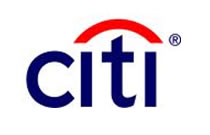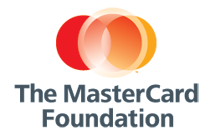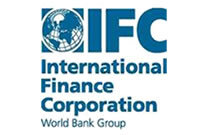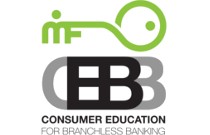What?
HOW CAN WE HELP YOU?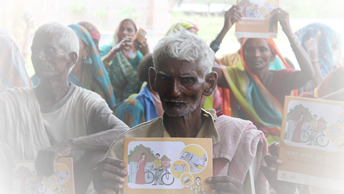
What financial inclusion obstacle are we supporting low-income people to navigate? What financial capability are we attempting to enable or develop? What – gives you access to MFO’s select publications organized around the content of a financial education curriculum or training manual. You can also gain access to the full set of Global Financial Education Program materials here.
Not finding what you are looking for? Click here.
Answers from Stakeholders in the Bangladesh RMG Sector
In MFO’s previous blog post at workerdiaries.org we suggested that data coming out of Bangladesh from interviews with garment workers raised some important questions for RMG sector stakeholders on such topics as job security in 2021, the future of digital wages, food security, illness, and the cost of credit. In our recently aired webinar MFO and SANEM gave stakeholders the opportunity to answer these questions.
This week’s blog summarizes those answers provided in the webinar. If you’d like to dig deeper you can download MFO’s full presentation from the webinar. Whether or not you watch the whole webinar, digest the full presentation, or read the distilled notes in the blog, we hope that you’ll come away with a better sense of what’s going on in the Bangladesh garment sector within this very particular COVID context.
Warning: count(): Parameter must be an array or an object that implements Countable in /home/microf13/public_html/wp-content/themes/mfo/modules/looking_for_something_query.php on line 51

#OpenDiaries Campaign Launch
MFO and SANEM are excited to share with you the launch of our #OpenDiaries campaign. The goal of this campaign is to build a communication channel between everyday consumers and garment workers in Bangladesh. MFO and SANEM have laid the groundwork by interviewing over 1,300 garment workers every week for two years. By opening their financial diaries, they’ve given us a window into their economic realities. When COVID-19 struck and in-home interviews were no longer possible, we kept up the conversation over the telephone. Now we want people just like you to ask these workers your own questions about their work and their lives.
Along with opening their homes to us, garment workers have opened their financial diaries to us. The insights workers provide into their own financial lives are crucial to keeping global apparel supply chains transparent. The insights also help us understand how financial inclusion is working among low-income populations, and can indicate whether or not financial capabilities among these populations are being broadened for the better good.
In addition to direct answers to your questions, each #OpenDiaries post will feature photos of garment workers taken by the garment workers themselves. Just as the workers are sharing the answers to your questions with us, they are also sharing a glimpse into their own world. Note: the quotes in these campaign posts are not from the workers in the photos, but from different workers.
MFO and SANEM will be launching this campaign across all our social media platforms. If you have a question for the garment workers, there are three ways to ask it: 1) direct message us 2) write in the post comments, or 3) send an email to questions@workerdiaries.org.
Questions are already starting to come in and we are looking forward to reading more of them!
Please go to workerdiaries.org to read more about what is happening in the Garment Worker Diaries study, and please pay a visit to our #OpenDiaries campaign at all of our social platforms (links below):
Instagram: https://www.instagram.com/mfo_workerdiaries/
Facebook: https://www.facebook.com/mfopps
LinkedIn: https://www.linkedin.com/company/microfinance-opportunities
Twitter: https://twitter.com/mfopps
Warning: count(): Parameter must be an array or an object that implements Countable in /home/microf13/public_html/wp-content/themes/mfo/modules/looking_for_something_query.php on line 51

Garment Worker Diaries Raise Questions for Stakeholders
In MFO’s latest post in our Garment Worker Diaries blog series on workerdiaries.org, we don’t share any new data with you. Rather we have organized past data that we have posted around four topics:
- Job Security in 2021
- Wage Digitization and Digital Financial Skills
- Work, Food Security and Illness
- Cost of Credit
For each topic we raise two questions for stakeholders. Hopefully you can take a quick read of the blog and think about the questions posed in it.
MFO’s Executive Director, Guy Stuart, will be presenting the same data and raising the same questions during a webinar that SANEM is hosting on Saturday, October 31 at 8pm Dhaka time (10am EST). We will have a panel of discussants who will comment on each topic and share their insights with us.
You can register to participate in the webinar here: https://tinyurl.com/y5zbb6ab.
The webinar will be conducted over ZOOM and broadcast live on SANEM’s Facebook page and YouTube channel.
We will be recording the webinar, and in next week’s blog we will share some of the highlights as well as a link to the full recording for those interested.
Warning: count(): Parameter must be an array or an object that implements Countable in /home/microf13/public_html/wp-content/themes/mfo/modules/looking_for_something_query.php on line 51

Half a Year of COVID-19 for Garment Workers in Bangladesh: What’s Next?
Here is MFO’s latest post in our Garment Worker Diaries blog series on workerdiaries.org: Half a Year of COVID-19: What’s Next?
With six months of COVID-19 permeating daily life in Bangladesh, what we want to know is whether garment workers are getting by, or just barely getting by. That is the topic of this week’s GWD blog.
While many variables such as employment and wage rates are trending positively and upward, we’ve noticed that just this past month a slightly higher rate of workers reported household illnesses, and a slightly higher rate of workers reported factory-related employment issues, such as factory closures.
We are in the middle of a critical time for both data collection and analysis. The next few months and into early next year will add crucial chapters to this story. Please read the full blog and check back with us next week for more updates on the lives of garment workers. And especially, do let us know if there is anything about garment workers themselves that you’d like us to ask them. You can write your questions to us at info@mfopps.org
Warning: count(): Parameter must be an array or an object that implements Countable in /home/microf13/public_html/wp-content/themes/mfo/modules/looking_for_something_query.php on line 51

Employment and Factory Status Update from Garment Workers in Bangladesh
Here is MFO’s latest post in our Garment Worker Diaries blog series on workerdiaries.org: Employment and Factory Status Update
In April 2020, much of the RMG sector in Bangladesh shut down. The workers participating in the GWD study reported very few hours worked during that month.
The basic story workers are telling us is that by far May presented the most work-related challenges, indicating that factories themselves were also at their most strained in that same month. Subsequent months show the negative effects of COVID-19 dissipating rather rapidly however as workers reported far fewer instances of employment issues.
While the situation is not gloomy, neither is it rosy, as the rate of worker-reported employment issues ticked back up again in September. The remaining months in the year will tell us far more about what if any lingering impact COVID-19 has had on the industry.
Please check out the full blog and let us know if you have any questions, comments, concerns or ideas. And especially, do let us know if there is anything about garment workers themselves that you’d like us to ask them. You can write your questions to us at info@mfopps.org
Warning: count(): Parameter must be an array or an object that implements Countable in /home/microf13/public_html/wp-content/themes/mfo/modules/looking_for_something_query.php on line 51




